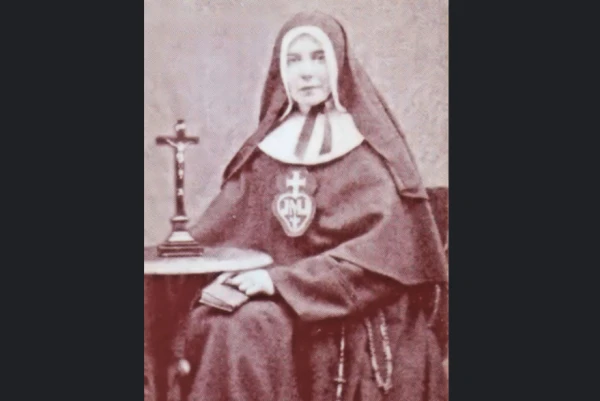
The year 2019 marks 190 years since Britain’s Parliament passed the Catholic Relief Act of 1829, commonly described as Catholic Emancipation. It removed the last traces of anti-Catholic laws which had been variously enforced since the reign of Elizabeth I.
In the 17th century, following the turmoil of the Reformation, its aftermath, and a Civil War, the Stuart King James II, who had become a Catholic, had promised toleration for Catholics and Protestants alike. This was in contrast, it has to be said, to Catholic monarchs in much of Europe who used laws to persecute and punish Protestants.
After King James’ removal in 1688, restrictions on Catholic life and practice were strongly enforced under the succeeding Protestant monarchs. Throughout the 18th century, Britain was officially a “Protestant country,” with Catholicism seen by many as something alien and wholly foreign. Following the failure of the Stuarts to regain the throne in 1746—with the slaughter at Culloden and the exile of “Bonnie Prince Charlie”—the situation seemed unlikely to change.
But as the 19th century beckoned, new things were stirring: the idea that religious belief and practice was essentially a matter for the State to impose or control was challenged. Around the country, John Wesley’s outdoor preaching made the Anglican establishment look bleak and bereft of conviction. The stirrings of the Industrial Revolution also brought changes to the old way of life. And world events brought fresh thinking too. The attempt to hold the American colonies while simultaneously fighting elsewhere had revealed the need for a strong and loyal Army, and the British Army had a large number of Catholic soldiers in its ranks—not least from Ireland—so for some time a “no questions asked” unofficial policy effectively allowed them to get to Mass when it was available. And, as the 19th century got under way, the restlessness in Ireland brought an urgent need to free people there from laws which sought to ban them from adhering to their ancient faith.
Catholic Emancipation was extremely controversial. The King—George IV, son of George III and regent during his father’s final illness—announced that to sign the act would be to betray his coronation oath. There were fears of the pope—a foreigner!—having influence on the British way of life. But the Duke of Wellington—victor of the battle of Waterloo and a national hero—had become prime minister, and in January 1829 met the king and succeeded in persuading him of the absolute necessity of allowing Catholics freedom to practice their faith.
So the act became law. Catholics were freed from all restrictions on founding schools and churches and establishing organisations, and could become Members of Parliament, hold commissions in the Army, and be active in public life. All that effectively remained were limitations on marrying into the Royal Family.
But there was also something more. Catholics knew of the attempt under Queen Mary Tudor to re-impose Catholicism following the break with Rome under Henry VIII. Mary had in fact initially been a popular queen—people loved their Faith and rejoiced to have back their feast-days and traditions. They longed for the return of monks and nuns who had cared for the poor and sick. But the burning alive of Protestants did not produce the results Mary wanted; it killed heretics but not the heresy. Was the imposition of Catholicism by law the best way of reviving the Faith?
Catholics also knew—which many of their fellow-countrymen did not—of the reverse side of the story: persecution of Catholics in the subsequent reign of Mary’s half-sister, Elizabeth. Men trained abroad as priests and returned to minister in secret to those who sought to remain faithful to the Catholic faith. When arrested and tried they invariably spoke only about the truths of the Faith: the glory of the Mass and the sacraments, the unity of the Church with the successor of St. Peter. They did not see themselves as agents of a foreign power, nor did they seek to impose Catholicism by government decree or State action.
The Faith thus cherished seemed to have a vigor that was enhanced by the martyrdom, and to hold the promise, even when things seemed hopeless, of continual renewal and rebirth.
And then, after grim years, a Second Spring. Five years after Catholic Emancipation the throne of the United Kingdom passed to a teenage girl, Alexandrina Victoria. She chose to use her second name, and bequeathed it to an entire era.
The Catholic revival in Britain in the 19th century would be, under God, a mix of many things: freedom, Irish immigration, the Oxford Movement, the Gothic Revival in architecture, and more. It both fostered and was fostered by social reform, widespread literacy, and a renewed interest in history. And it was the fruit of freedom, of people allowed to hear the voice of the Church and to respond to it.
If you value the news and views Catholic World Report provides, please consider donating to support our efforts. Your contribution will help us continue to make CWR available to all readers worldwide for free, without a subscription. Thank you for your generosity!
Click here for more information on donating to CWR. Click here to sign up for our newsletter.








I was curious to know why the king was convinced of the “absolute necessity of allowing Catholics freedom to practice their faith.” Maybe it would have been too long for this article, but it would be interesting to know at least some of the arguments that convinced him in that regard.
A major reason which the article omits, was the terrors unleashed by the world’s first atheist regime in France from 1793, which caused many Catholic refugees to flee, even to England. Wellington knew that he could never have defeated the atheist forces at Waterloo without his Catholic allies.
Loved that article Joanna…
Thank you
gramswisewords.blogspot.com